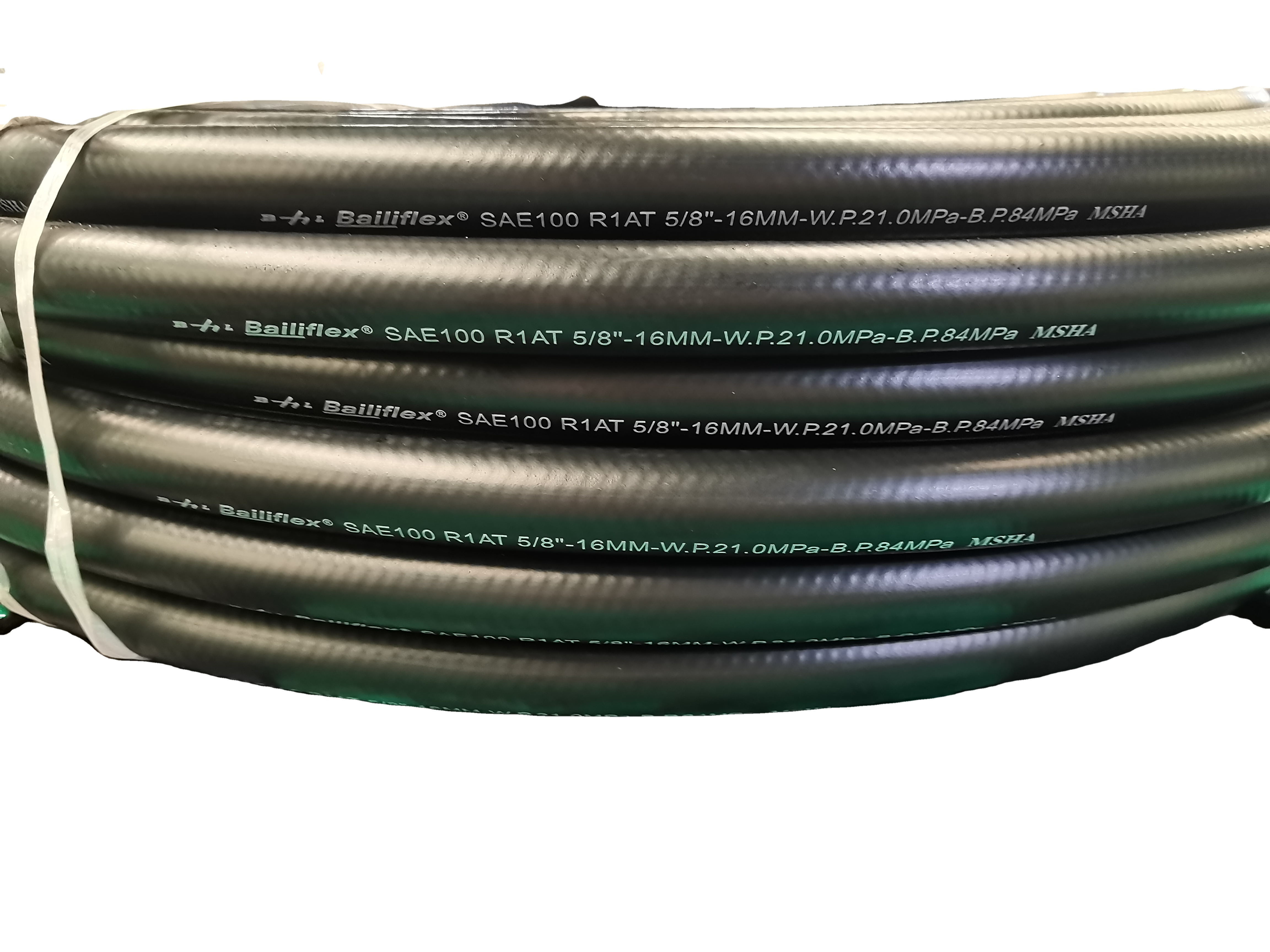Nov . 15, 2024 22:47 Back to list
hydraulic rubber hose fitting
Understanding Hydraulic Rubber Hose Fittings A Comprehensive Overview
Hydraulic systems are integral to many industrial applications, relying heavily on fluid power to perform tasks. At the heart of these systems lies the hydraulic rubber hose and its fittings, which are vital for ensuring efficient and safe operation. This article will explore the key aspects of hydraulic rubber hose fittings, their types, applications, and considerations for selection.
What are Hydraulic Rubber Hoses?
Hydraulic rubber hoses are designed to transport hydraulic fluids under high pressure. Made from durable rubber materials, these hoses are reinforced with layers of textile or steel wire to enhance their strength and flexibility. They are essential for various machinery and equipment, including construction vehicles, agricultural machinery, and manufacturing processes.
The Role of Hose Fittings
Hydraulic hose fittings are crucial components that connect hoses to pumps, valves, and other equipment in a hydraulic system. The fittings ensure a secure and leak-free connection, which is essential in maintaining system integrity and performance. Available in various shapes, sizes, and configurations, these fittings accommodate different applications and requirements.
Types of Hydraulic Hose Fittings
1. Reusable Fittings These fittings can be used multiple times, making them a cost-effective solution. They allow for easier hose replacements and repairs, which is beneficial for maintenance.
2. Crimped Fittings Crimped fittings are permanently fixed to hoses using a crimping machine. This type provides a strong and reliable connection that is less likely to leak under high-pressure conditions.
3. Swivel Fittings Swivel fittings allow for flexibility in hydraulic systems by enabling rotation without twisting the hose. This is particularly useful in applications where hoses are subjected to movement or bending.
hydraulic rubber hose fitting

4. Flared Fittings These fittings have a flared end that provides a wider surface area for a secure connection. They are commonly used in high-pressure applications where leak prevention is critical.
5. Straight Fittings and Elbow Fittings Straight fittings connect hoses in a linear fashion, while elbow fittings change the direction of flow, typically at a 90-degree angle. Both types come in various sizes to match the corresponding hoses.
Selecting the Right Fitting
When choosing hydraulic hose fittings, several factors must be considered
1. Compatibility Ensure that the fitting material and design match the hose type and the hydraulic fluid being used. Rubber hoses made for specific fluids, such as oil, water, or steam, require corresponding fittings.
2. Pressure and Temperature Ratings Fittings must be rated for the system's operating pressure and temperature. Using fittings that cannot withstand the required specifications could lead to failures and accidents.
3. Size and Thread Type The size of the fitting must match the hose diameter, and the thread type should be appropriate for the application. Common thread types include NPT (National Pipe Thread), SAE (Society of Automotive Engineers), and BSP (British Standard Pipe).
4. Application Environment Consider the environment in which the fittings will be used. Factors such as exposure to chemicals, extreme temperatures, and mechanical abrasion can dictate the choice of material and design.
Conclusion
Hydraulic rubber hose fittings are essential components of hydraulic systems, ensuring reliable and efficient fluid transfer. Understanding the types of fittings available and how to select the appropriate one based on specific applications is crucial for maintaining system integrity and safety. Regular inspection and proper maintenance of hoses and fittings can significantly extend their lifespan and prevent costly failures, thereby optimizing productivity in various industrial applications. Whether it’s in construction, manufacturing, or agriculture, the significance of quality hydraulic hose fittings cannot be overstated.
-
Best Four Steel Wire Spiral Hose Hydraulic R12 – Durable High-Pressure Hose Manufacturer
NewsJul.08,2025
-
High-Quality 1/4 Hydraulic Hose – Soft, Flexible & Durable Rubber Hoses for Industrial Use
NewsJul.08,2025
-
1 1 2 Inch Hydraulic Flexible Hose - Durable, Reliable, High-Pressure Solutions
NewsJul.07,2025
-
High-Quality 1 2 Rubber Hose - Durable, Flexible Hydraulic Solutions
NewsJul.07,2025
-
Discover SAE Hydraulic Hose Types - High Quality & Durable Hoses from Leading Factory Supplier
NewsJul.06,2025
-
High Pressure Wire Hydraulic Rubber Hose Supplier Durable & Reliable 1SN Hose Solutions
NewsJul.06,2025
